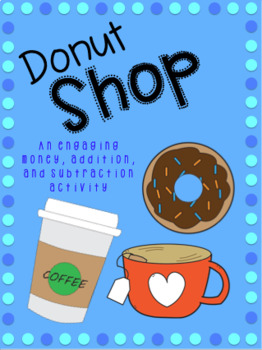Donut Shop (money, addition, and subtraction)
- PDF
- Easel Activity
Description
Ready to set up shop in your classroom? Get started with an engaging donut shop activity! Students stuck at home for distance learning? Challenge them to set up their own donut shop at home.
This fun product can be used in many different ways!
1) There are 2 different menu versions. One with the prices and one without prices. If you select the one without prices, hang the different food cards around the room. Students can practice their coin counting abilities.
2) After students complete the menu, or use the menu with prices already on it, students can create their own breakfast and practice adding up a meal.
3) Set up a donut shop in your classroom. You can give students laminated place mats provided in this PDF. Have students take turns being waiter and waitresses. The can use the guest checks to write down orders and prices. Have the waiters and waitresses total up the costs of meals.
4) If you want to take it a step further, the students who are being the customers can pay with play money, for the exact amount. Or have them pay over the total, to practice making change.
Not old enough for counting money? Use the donuts, snack, and drinks as props for a dramatic play area.






